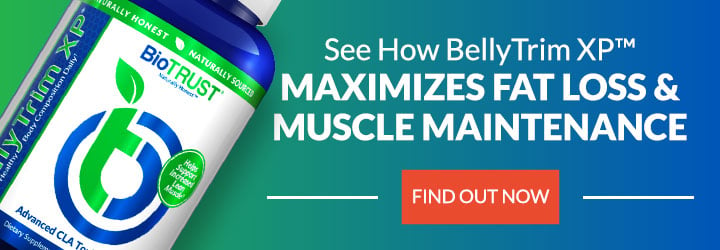Food Addiction: Can You Actually Be Addicted to Food?

How’s your relationship with food? Do you think you may have a food addiction? If those sound like strange questions to you, let me ask you some different questions.
- Do you actively restrict your intake of certain “bad” foods?
- Do you find yourself cycling between periods of restriction and seemingly uncontrollable overeating?
- Do you feel like food controls you, your thoughts, your decisions, and your schedule?
- Do you have a very strong urge to control your food intake, including what, how much, and when you eat?
- Do you find it hard to control your intake of certain foods, such as sweets, salty snacks, starchy foods, or fried/fatty foods?
- Have you ever thought of yourself as a “chocoholic,” “carb craver,” or “food addict?”
What’s your opinion on food addiction? Can you actually be addicted to food? Or, do you think the concept of food addiction is more of a self-serving attribution that allows self-perceived food addicts to dodge some of the responsibility and guilt associated with overeating?
No doubt, food addiction is a controversial and heavily debated topic, and scientific research in the field is in its relative infancy. While there is disagreement about whether food addiction is real or bogus, it seems like it’s a matter of semantics.
“Some people definitely exhibit addiction-type behaviors toward specific types of food. Whether or not you want to call it addiction, it sure as hell looks like addiction.” – Stephan Guyenet, author of The Hungry Brain: Outsmarting the Instincts That Make Us Overeat.1
The Origin of Food Addiction
The concept of food addiction is nothing new. In fact, the term was introduced over 60 years ago by Dr. Theron Randolph, who suggested certain foods can produce “a common pattern of symptoms descriptively similar to those of other addictive processes.”2 In other words, the concept of food addiction suggests that certain people’s tendency to eat—to a point of excess—palatable foods can be understood within the same neurobiological framework as drug addiction.3
Almost anything in the human experience can be rewarding, giving it the potential to become addictive. Like drugs and alcohol, food is suspect, and the term “food addiction” has been used in combination with specific eating behaviors to describe an abnormal pattern of excessive consumption.
According to the 5th edition of the American Psychiatric Association’s Diagnostic and Statistical Manual of Mental Disorders (DSM-5), addiction requires two or more of the following: withdrawal, tolerance, use of larger amounts of the substance over longer periods, spending a great deal of time obtaining and/or using the substance, repeated attempts to quit, activities given up, and continued use despite adverse consequences.4
Like drug addiction, folks who exhibit addictive-like eating behaviors experience similar thoughts, feelings, emotions, and symptoms, including:5
- Loss of control over consumption
- Withdrawal
- Cravings for “problem foods”
- Continued use despite negative consequences
- Inability to cut down despite the desire to do so
- Increased impulsivity
- Emotional reactivity
Unlike drugs and alcohol, however, food is a daily necessity. And while there’s plenty in the camp of belief that food addiction exists, opponents are quick to point out that a so-called substance of abuse has not been identified. Along those lines, there is no consensus that food addiction is a clinical disorder nor is there a universally accepted definition for food addiction.
Is It a Food Addiction? Or An Eating Addiction?
In 2009, researchers from Yale developed the Yale Food Addiction Scale (YFAS) as a means to assess addictive-like eating behavior, and it has fueled at least some of the controversy surrounding the notion of “food addiction.”6 While you can find the YFAS here, some examples of the items on the survey include:
- “I find myself continuing to consume certain foods even though I am no longer hungry.”
- “I eat to the point where I feel physically ill.”
- “I find that when certain foods are not available, I will go out of my way to obtain them.”
- “There have been times when I avoided professional or social situations where certain foods were available because I was afraid I would overeat.”
- “My behavior with respect to food and eating causes significant distress.”
- “I experience significant problems in my ability to function effectively because of food and eating.”
- “Over time, I have found I need to eat more and more to get the feeling I want, such as reduced negative emotions or increased pleasure.”
There are 25 questions total, including some that ask whether eating—or not eating—certain foods has ever interfered with work, spending time with family and friends, and engaging in important activities or recreational activities you enjoy.
While the survey emphasizes signs of addiction toward certain types of food (namely palatable, processed junk foods enriched with added fat, sugar, and/or salt) critics argue that the YFAS “clearly focuses on the assessment of eating behavior and not on substance-based addiction.”
In other words, foods are nutritionally complex, and at this stage in food addiction research, the “substance of abuse is not defined.” This has led researchers to suggest that eating addiction, rather than food addiction, may better capture addictive-like eating behavior.7
If you ask me, we’re splitting hairs. So, let’s leave it up to the researchers to decide whether the addictive-like behaviors are substance-based or behavior-based. After all, the debate over whether it’s food addiction vs. eating addiction is certainly relevant for scientific research, public policy, clinical practice, and so on. But practically speaking, I’m not sure it matters.
Summary: As the debate rages on among the scientific community as to whether we should call it “food addiction,” “eating addiction,” or something else, it’s readily apparent that certain folks are vulnerable to addictive-like eating behaviors, particularly as it relates to specific foods.
The Dopamine Made Me Do It
As Robb Wolf so succinctly yet accurately put it, humans are “wired to eat.”8 We have biological pathways that reinforce eating, and from an evolutionary standpoint, that has been imperative for survival. However, in today’s world, there’s no scarcity of food. In fact, we live in an environment of plenty where we have easy access to a seemingly endless supply of energy-dense foods, much of which has been manufactured to hijack and exploit the body’s pleasure and reward system.
In other words, we no longer eat only when we’re “metabolically” hungry, which is referred to as homeostatic hunger. Instead, we often eat—and feel very driven or compelled to do so—in the complete absence of hunger (and often, in spite of having plenty of energy “reserves” in the form of stored body fat). This non-homeostatic eating is often referred to as hedonic eating, which involves neural circuits and emotional factors that parallel addiction mechanisms.9
When it comes to hedonic eating and food addiction, the neurotransmitter dopamine often takes center stage. Dopamine (an “excitatory,” feel-good chemical) is closely tied to feelings of pleasure, reward, liking, and wanting, and it is often involved in the development of addictive behaviors. An increase in dopamine in an area of the brain called the nucleus accumbens (NAc) reinforces behavior, leading to habit-forming, reward-seeking behaviors.10 The NAc is also referred to as the brain’s “pleasure center.” Numerous studies have shown that both food and drugs stimulate abrupt increases in dopamine that override the brain’s ability to control intake.11
Make no mistake about it, highly palatable junk foods (rich in fat and sugar) have powerful reward properties—much more than whole, minimally processed foods.12 From an evolutionary standpoint, this property of palatable foods has obvious advantages, as it ensured food would be eaten when available, with extra stored (as fat) for future need when food was scarce. In today’s world, however, where an abundance of food is virtually always readily available, this adaptation is a liability.
Like animals, we do not simply experience rewards; we anticipate them. And the simple act of anticipating highly palatable foods (such as sweets) can elevate levels of dopamine in the reward center of the brain. In other words, just thinking about certain junk foods can initiate the reward response, and interestingly, this anticipatory effect seems to be greater in obese folks.12,13
We can’t ignore “hunger hormones” like leptin and ghrelin, which can influence dopamine release and the body’s reward response. For example, when levels of the “energy sensing” hormone leptin drop (such as when restricting calories and/or when you lose weight), the body initiates a cascade of compensatory metabolic adaptations intended to either reduce how many calories you burn and/or compel you to seek out more food—particularly calorie-dense, highly-palatable foods.14 Then there’s ghrelin, which stimulates hunger and “turns on” reward centers in the brain, increasing the pleasure and reward response to eating and reinforcing the consumption of calorie-dense, highly palatable food.15
Not surprisingly, food restriction also increases the reward value of a food. For example, when healthy adults who were fasting were shown pictures of high-calorie foods, the reward-related centers of their brain lit up to a greater extent than low-calorie foods. In other words, deprivation increases the drive to eat tasty, energy-dense foods.16 This is one reason why it’s usually not such a great idea to go grocery shopping when you’re hungry, and why those cupcakes, potato chips, and pizza look so damn tasty (and are so hard to stop eating) when they’re “off limits” or labeled as “bad.”
Summary: Eating (and thinking about eating) triggers pleasure center of the brain (in a way that’s similar to substances of abuse), and the rewarding properties of highly palatable, energy-dense processed foods are very profound. Restricting foods (and calories) can also increase the reward response and the drive to seek highly palatable foods.
Individual Differences Apply
As we’ve said time and again, individuals are unique as their sets of fingerprints. While there’s a paucity of population-based prevalence rates for food addiction, studies estimate that 20 – 25% of folks struggle with food addiction, and it is more common among adults over 35 years old, females, and overweight and obese folks. Not surprisingly, in populations with disordered eating, rates of food addiction are projected to be much higher—nearly 60%.17 In addition, studies have revealed that higher scores on the YFAS are associated with a specific genetic profile related to dopamine signaling. In other words, some folks seem to be more vulnerable to engage in addictive-like eating behaviors.
Studies involving brain-imaging scans show that there are similarities between obesity and addiction. For instance, both obesity and addiction are associated with fewer dopamine receptors in the brain.18 Interestingly, one study found that folks with the highest body mass index (suggesting obesity) had the fewest dopamine receptors.19 In turn, these folks may be less sensitive to reward stimuli, and as a result, may be inclined toward overeating as a means to compensate for decreased activation of these neural circuits.
This also means that folks with fewer dopamine receptors have less activity of the areas of the brain that control inhibition.18 Studies have shown that obese folks experience greater reward from both food consumption and anticipated food consumption compared to lean individuals.20, 21 In other words, just the thought of consuming highly palatable foods can create a rush of excitement in some folks, leading to cravings and overeating.
Another concept worth mentioning here is habituation, which says repeated exposure to a stimulus leads to a decrease in responding. In a way, this is similar to the concept of tolerance as it pertains to drugs of abuse. In terms of food intake, habituation basically says eating the same food increases satiety and ultimately results in stopping eating. This is sometimes referred to as sensory-specific satiety.22
From that standpoint, it is not surprising that some folks develop what is often described as a “tolerance” to highly palatable foods. In other words, more of a given food is needed to get the desired reward “fix.”13 As you might suspect, the converse is often true. When you restrict these highly palatable foods, the rewarding properties can be quite overwhelming. It’s a bit of a catch-22.
On the flipside, increased variety (dietary diversity) is a surefire way to increase caloric intake and override those internal sensory signals of satiety. People who lose weight and keep it off know this little secret, as they tend to eat the same things day in and day out. This is, in part, why it’s so easy to overeat at parties and buffets where there’s seemingly endless variety. This is also why the old saying “everything in moderation” is not the best dietary advice.23
This is another illustration of why the modern, variety-rich food environment is so suspect. We are surrounded by highly palatable food choices on virtually every corner. We have 24-hour access, and we can have any quantity or variety of highly palatable foods delivered to our doorsteps with the touch of a button or tap of a screen.
We have to keep in mind that we are biologically complex organisms. Addictive behaviors are equally complicated, and they are often accompanied—or triggered—by one or more of the following constructs:
- Memory
- Boredom
- Shame
- Guilt
- Habit
- Impulsivity
- Restraint
- Depression
- Anxiety
In my experience, overeating and addictive-like eating behaviors are often initiated as a coping mechanism. They can serve as a survival, defense, and self-protection mechanism. Ironically, addictive-like eating behaviors often “solve” a problem, helping one escape from painful feelings and unpleasant truths. Unfortunately, this is only a temporary “solution.” The rush wears off, and you’re left with the same emotional problems, plus the additional problems the addictive-like eating behaviors bring.
Summary: Some people seem to be more vulnerable to engage in addictive-like eating behaviors based on genetics and affect.
The Food Industry’s Role in Food Addiction
As you can imagine (and have likely experienced), hyperactivation of dopamine and the reward system is more pronounced when consuming (or even thinking about) calorie-dense, highly palatable foods, which share powerful reinforcing effects with drugs of addiction. In other words, it’s much easier to overeat and far more common to crave processed junk foods than, say, whole, minimally processed foods like vegetables, beans, and eggs.
There’s no question that the magical “bliss point” the processed food industry engineered can produce an extreme sense of pleasure. You see, food manufacturers know exactly how much sugar, fat, and salt—the “three pillars of processed foods”—they need to include in a product to “override our dietary self-control… to compel overconsumption,” as Pulitzer Prize-winning investigative journalist for the New York Times Michael Moss discusses in the book Sugar, Salt, Fat: How the Food Giants Hooked Us.26
In addition to getting the levels of saltiness, sweetness, and richness “just right,” the processed food industry often adds a crunchy mouthfeel to their bliss-point formulations, resulting in a whole new generation of “craveable” foods. And the highly accurate and alluring marketing slogans that often accompany these highly palatable processed foods (such as “Once you pop, you can’t stop” and “Betcha can’t eat just one”) certainly don’t help. In fact, there’s no question that marketing campaigns contribute to making us feel powerless in the face of these carefully and artificially crafted concoctions.
As you might imagine, not all foods are equally implicated in addictive-like eating behaviors, and processed highly palatable foods are particularly likely to trigger an addictive response in some individuals. The same group of researchers that created the YFAS found that calorie-dense, highly palatable processed foods that are higher in fat and refined, rapidly absorbed carbohydrates are most likely to be associated with addictive-like eating behaviors. The following list of “probable suspects” is unlikely to surprise anyone:5
- Chocolate
- Ice Cream
- French Fries
- Pizza
- Cookies
- Chips
- Cake
- Buttered Popcorn
- Cheeseburgers
- Muffins
- Breakfast Cereal
- Gummy Candy
- Fried Chicken
- Soda
- Plain Rolls
- Cheese
- Pretzels
- Bacon
- Plain Crackers
Of course, while there are naturally-occurring foods that contain sugar (such as fruits) and those that contain fat (nuts, for example), this combination of refined carbohydrates and fat rarely occurs in nature. Rather, this unique tandem of refined carbohydrates (sugar, white flour) and fat is unique to highly processed foods, which have been engineered to be particularly rewarding, reinforcing the amount and frequency of consumption.
A quick note on sugar, which many have pointed the finger at, as there is evidence from experimental research (in animals) suggestive of sugar addiction. However, we can’t translate that directly to humans, and in a recent review published in the European Journal of Nutrition, researchers found that there’s “little evidence to support sugar addiction in humans, and findings from the animal literature suggest that addiction-like behaviours, such as bingeing, occur only in the context of intermittent access to sugar. These behaviours likely arise from intermittent access to sweet-tasting or highly-palatable foods, not the neurochemical effects of sugar.”3
Summary: Certain foods—namely, highly palatable processed foods that contain added fat and refined carbohydrates (such as sugar and/or flour)—are much more likely to promote addictive-like eating behaviors.
Self-Fulfilling Prophecy
Something we have to be very careful with is the idea of a self-fulfilling prophecy. Sometimes, when there’s a name for something, it can normalize and even encourage the undesirable behaviors. In other words, it somehow makes it okay, and in this case, some researchers believe the concept of food addiction can create a self-perpetuating relationship with food.
What’s more, the popular acceptance of the concept of food addiction may be making matters worse. In one survey of Australian and American adults, 86% believe that certain foods are addictive, and in a separate study, researchers found that 75% of respondents perceived sugar to be as addictive as cocaine. What’s more, surveys have also shown that many Americans believe that food addiction is the most likely explanation for increasing rates of obesity.28
Somewhat surprisingly, self-perceived food addiction was reported in over half the participants from a university student sample and up to 42% of a community sample in the United Kingdom. And in a survey conducted among members of an online self-help community, two-thirds of overweight adolescents believed themselves to be addicted to at least one food.28
Keep in mind that these self-reported rates of food addiction are significantly higher than those reported using the diagnostic criterion of the YFAS (typically between 5 and 16%). In one recent study, researchers found that only 12% of self-perceived food addicts met the YFAS criteria for food addiction.29
Based on these relatively large and concerning discrepancies, some researchers have theorized that food addiction is a self-serving attribution. In other words, self-perceived food addiction may serve to minimize perceptions of blame, guilt, and personal responsibility associated with overeating by portraying oneself as a “helpless victim.” Having said that, there is evidence to suggest that perceiving oneself to be a food addict may actually be helpful for those attempting to reduce their overeating tendencies.28
Summary: Among the public, the concept of food addiction is a very popular, readily accepted explanation for overeating and obesity. However, the concept of food addiction may be a self-serving attribution that reinforces overeating while minimizing blame, guilt, and personal responsibility.
The Truth About Food Addiction: A Recap
See, I told you the topic of food addiction was complicated. If you struggle with what you consider to be food addiction, the first step is to realize that you’re not alone nor are you to blame. Some people seem to be more vulnerable to engage in addictive-like food behaviors, and certainly, the modern food environment—with its abundance of highly palatable foods—promotes such eating behavior. The rise in popularity of the idea of food addiction compounds matters.
Here are some “next steps”:
- Honestly assess your relationship with food.
- Be mindful of your eating habits.
- Evaluate your food environment. Are highly palatable junk foods readily available? While moderation may be a nice idea, it doesn’t work for everyone.
- Be aware of any “triggers” or patterns. Do you notice that certain emotions, times of day, or social settings trigger addictive-like eating behaviors?
- Use distraction. One study showed that playing Tetris on a smartphone for as little as 3 minutes can weaken cravings for drugs, food, and activities./li>
- Get help. Addictive-like eating behaviors are often initiated as a coping mechanism for depression, anxiety, etc. Consider joining a support group (either in-person or online) and working with a licensed professional counselor.








